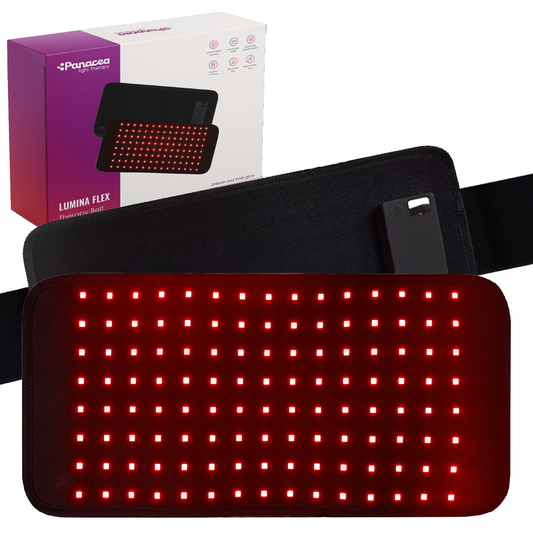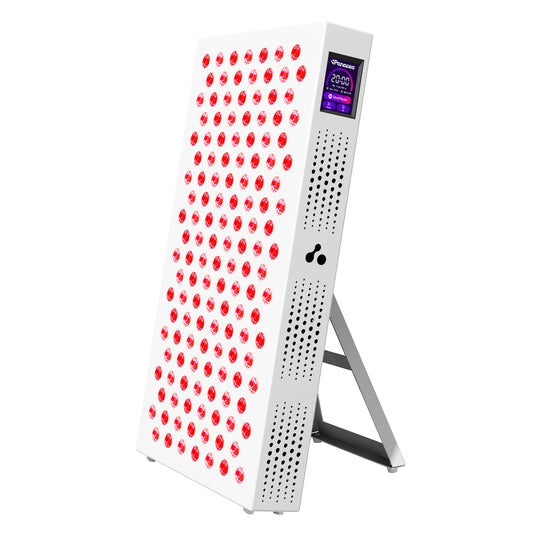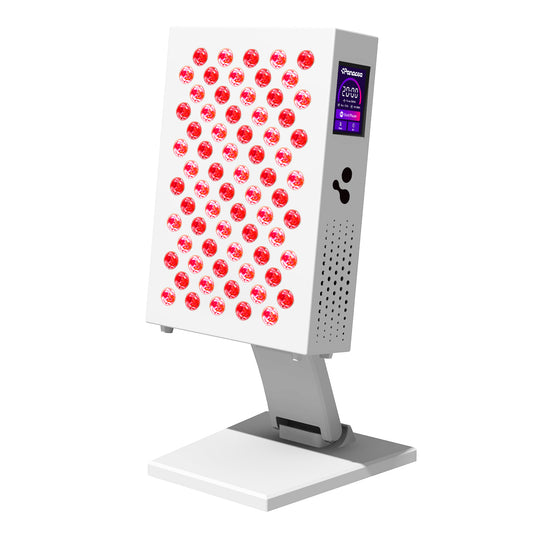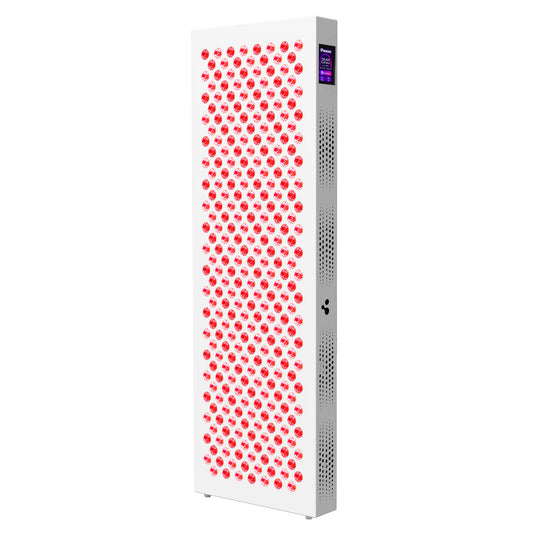
The Art of Choosing: How to Select Your Ideal Red Light Therapy Panel?
Red light therapy is quickly gaining ground in the world of health and wellness. But with so many options on the market, choosing the right panel can be overwhelming. Here are some crucial factors you should pay attention to to make an informed choice.
What Makes a Red Light Therapy Panel Effective?
The heart of an effective red light therapy panel lies in two essential factors: the irradiance and the wavelengths of the light. Irradiance refers to the intensity of the light emitted by the panel. The higher this value, the more effectively the light reaches the skin and underlying tissue. Cheaper devices often feature low irradiance, which means their effectiveness decreases sharply the further away you are from the panel. This is why it is crucial to choose a panel with powerful 5W LEDs and high beam intensity.
-
Irradiance: This is an indication of the power of the panel. The higher the irradiance, the more effectively the light can reach the skin and underlying tissue. Choose a panel with a high radiation intensity to ensure that the treatment is as effective as possible.
-
Wavelengths:
The wavelengths of 660 nm and 850 nm are often considered the most important in red light therapy due to their specific and powerful therapeutic benefits. These wavelengths have also been the most researched:
-
660nm Red Light: This wavelength is significant because it provides an optimal range for treating the skin. It penetrates the skin just deep enough to be effective at stimulating skin repair and cell renewal, and is particularly effective at promoting collagen production. This increase in collagen helps reduce wrinkles, improves skin elasticity and helps heal skin conditions. The 660 nm wavelength is often considered crucial for cosmetic and skin-related treatments.
-
850 nm Near Infrared Light: This wavelength is important because of its ability to penetrate deeper into tissue than visible red light. It reaches deeper muscles, bones and even joints, making it extremely effective for reducing pain and inflammation in deeper body structures. It is also known for its ability to speed muscle recovery and improve overall cell health. Because of this deeper penetration and versatile health benefits, the 850 nm wavelength is often used in treatments aimed at pain relief, muscle recovery and anti-inflammatory.
Other additional wavelengths are: -
630 nm Red Light: Ideal for skin treatments, helps improve skin tone and texture, and supports healing of superficial wounds.
-
810 nm Near Infrared Light: Suitable for relieving deeper pain, aiding muscle recovery and improving nerve function.
-
830 nm Near Infrared Light: Has slightly deeper penetration than 810 nm, useful for reducing inflammation and pain in deeper tissues.
Adding too many different wavelengths to a panel can be counterproductive as it can lead to a reduction in the intensity essential for effective treatment.
-
Quality and Sustainability
Also look at the build quality and lifespan of the panel. Quality panels use high-quality LED chips that ensure a longer lifespan and consistent output over time. While it may be tempting to go for cheaper options, it's important to remember that price is often a reflection of quality. Invest in a panel that offers the right balance between price and the above factors.
Size and Ease of Use
The size of the panel is important depending on the areas to be treated. Larger panels are suitable for larger body parts, while smaller ones are more suitable for targeted treatments. Also pay attention to ease of use – panels that are easy to place or hang offer more flexibility.
Modular Options
Some systems offer modular options, where you can connect multiple panels for more extensive treatments. This can be useful if you want to expand your treatment range in the future.
Conclusion
Choosing the right red light therapy panel requires attention to detail and an understanding of what quality means in this context. By focusing on beam strength, wavelengths, build quality, size, modularity and value for money, you can make a choice that suits your needs and helps you achieve your wellness goals.







